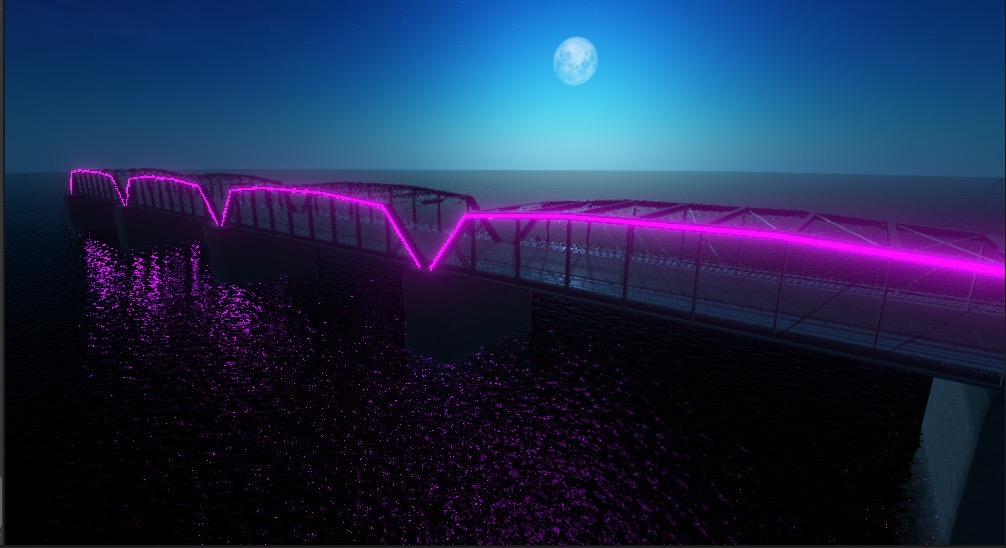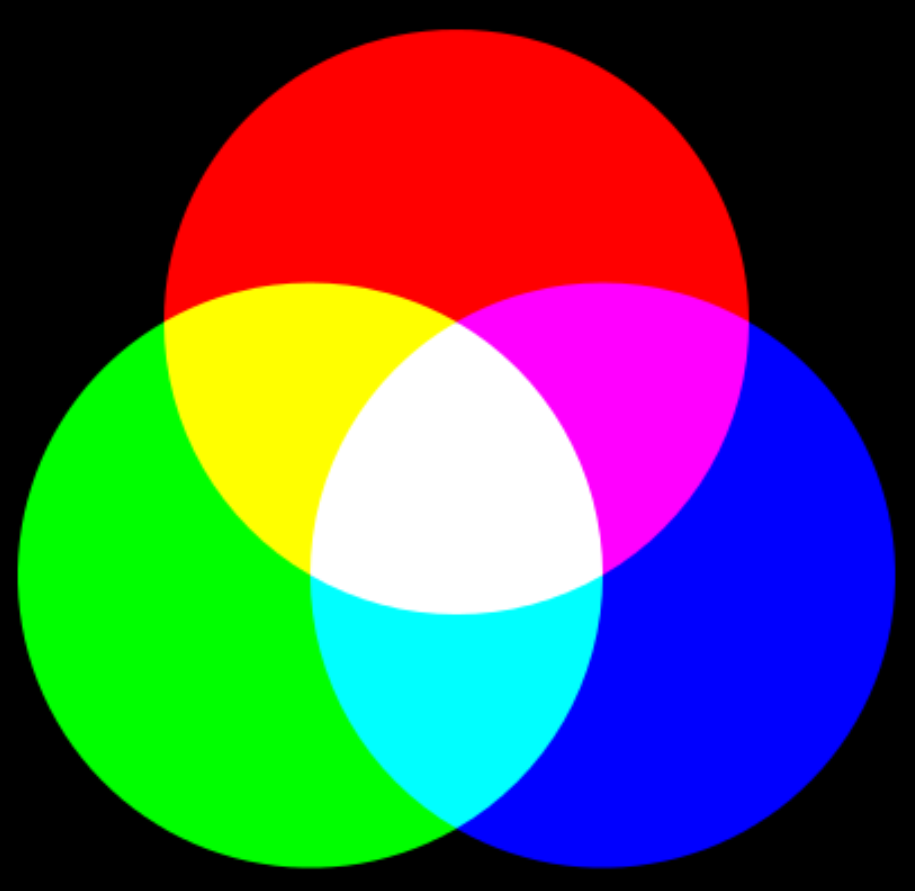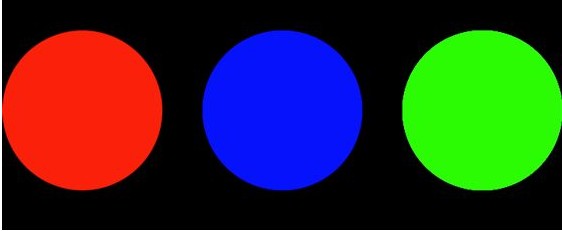Introduction to LED
Light-emitting diodes are simply referred to as LEDs. It is made of compounds containing gallium (Ga), arsenic (As), phosphorus (P), nitrogen (N), etc. When electrons and holes recombine, it can radiate visible light, so it can be used to make light-emitting diodes. Used as indicator lights in circuits and instruments, or composed of text or digital displays. Gallium arsenide diodes emit red light, gallium phosphide diodes emit green light, silicon carbide diodes emit yellow light, and gallium nitride diodes emit blue light. Due to chemical properties, it is divided into organic light-emitting diodes (OLED) and inorganic light-emitting diodes (LED).
Features of LED
Voltage
LED uses a low-voltage power supply, the power supply voltage is between 3-24V DC, depending on the product, there are also a few DC36V, DC40V, etc., so it is a safer power supply than using high-voltage power, especially suitable for public places.
efficacy
Compared with incandescent lamps with the same luminous efficiency, energy consumption is reduced by about 80%, and energy-saving lamps are reduced by about 40%.
applicability
The volume is small, each unit LED chip is 3-5mm square, so it can be prepared into various shapes of devices, and is suitable for variable environments
stability
100,000 hours, the light decay is 50% of the initial
Response time
The response time of the incandescent lamp is millisecond, and the response time of the LED lamp is nanosecond
Environmental pollution
Does not contain harmful metal mercury, etc.
colour
The light-emitting diode can easily adjust the energy band structure and the forbidden band width of the material through chemical modification methods to realize red, yellow, green, blue, and orange multicolor light emission. The working voltage of the red light tube is relatively small, and the working voltage of the red, orange, yellow, green, and blue light-emitting diodes of different colors increases sequentially.
price
The price of LEDs is becoming more and more civilian. Because of the power-saving characteristics of LEDs, perhaps in the near future, people will replace incandescent lamps with LED lamps. Some urban roads, schools, factories and other places in China have been replaced with LED street lamps and energy-saving lamps.
How to control the color change of three-color light-emitting diodes
LED color changing lamp is a new type of bulb. Its shape is the same as a normal milky white incandescent bulb, but it will automatically change color at a certain time interval after it is lit. It emits cyan, yellow, green, purple, blue, red, and white light cyclically. It is suitable for family birthday parties, holiday parties, Chinese New Year holidays, adding joy to the festival, and can also be used in entertainment venues and as advertising lights. The color-changing bulb is characterized by energy saving (power consumption about 1W), long life, easy to use, and low price.
The optical principle of discoloration
The color-changing light is composed of three primary colors of red (R), green (G), and blue (B) LEDs. Two-color LED is very familiar to us, generally composed of red LED and green LED, it can emit red or green light alone. If the red light and the green light are bright at the same time, the red and green lights are mixed into orange-yellow. The color-changing principle of the color-changing lamp is: when the three primary color LEDs light up two LEDs respectively, it can emit yellow, purple, and cyan colors (for example, red and blue LEDs emit purple light when they are lit). If the red, green, and blue LEDs are lit at the same time, it will produce white light. If there is a circuit that can make the red, green, and blue LEDs light up two by two, individually light up, and light up the three primary color LEDs at the same time, it can emit light of seven different colors.
The power supply outputs 15V voltage to the LED array, and outputs 14.6V to the LED controller. When one of the output terminals (1, 2, 3) of the controller is low level, the green LED will be on; if the three output terminals are low level, it will emit white light (green, red and blue LEDs are all on).
The LED controller is the key to the color-changing lamp, and it is undertaken by the CD4060.
The circuit of the LED color-changing lamp is composed of a power supply part, a color-changing control part and a three-primary-color LED array.
The capacitor step-down circuit composed of Buck capacitor C2, full-wave rectifier D2-D5 and voltage regulating diode D4 is a typical AC/DC conversion circuit. 15V Zener diode (strictly limited) is used as the power to drive the LED array. After D1 and C1 filter (approximately 145V), the voltage is provided to CD4060 and reset voltage (high level). The resistor R4 connected in parallel with the capacitor C2 is that when the power supply is disconnected, the charge on C2 is discharged by R4 to prevent the lamp cap from being charged.
The characteristic of this kind of power supply is that when the load voltage is much less than 220V, the load current IL≈69C (C is the step-down capacitor, the unit is uF, the unit of IL is mA). For example, when C=0.47 u F, the current flowing through the load is about 32.4mA, and this current is relatively stable. In addition, this power supply has a small size (small footprint). The disadvantage is that it is not isolated from the mains, and it is required to be enclosed in the lamp holder and have good insulation.
RGB LED color control and color mixing
About additive color mixing:
LED lamps use multiple light sources to obtain various colors and intensities. For the performing arts lighting industry, additive color mixing is a commonplace talk. For many years, practitioners have used lamps with color filters to project the same area on the sky screen. This method is not easy to control. The first smart luminaire used by the author is a spotlight with 3 MR16 light sources with red, green and blue color filters. In the early days, this type of lamps had only 3 DMX512 control channels and no independent intensity control channels. So it is difficult to keep the color unchanged during the dimming process. Usually, scanner programmers also set up a “light-off and color-changing” to easily turn off the lamps. Of course, there is a better way, which will not be listed here.
Color control and definition:
If users do not use pure DMX values to control smart lamps, but use some abstract control method, a virtual intensity value can be used. Even if the manufacturer stipulates that the luminaire uses 3 DMX channels, the abstract control method can also be assigned 4 handles to control: intensity value and 3 color parameters.
Here we use “3 color parameters” instead of red, green and blue, because RGB is just a way of describing colors. Another way to describe it is hue, saturation and luminance-HSL (some people call it intensity or lightness, not brightness).
The third description is hue, saturation and value-HSV. Value is also often referred to as brightness, which is similar to Iumlnance.
However, HSL and HSV have very different definitions of saturation. For the sake of simplicity, the author defines hue as color and saturation as the amount of color in this article. If “L” is set to 100%, it is white, and 0% is black. Then, 50% L is a pure color with 100% saturation. For “V”, O% is black and 100% is pure color. At this time, the saturation value must make up for the difference.
Another effective way to describe is CMY, which are three primary colors, using subtractive color mixing. If white light is emitted at first, then 2 color filters can be used to get red: magenta and yellow. They remove the green and blue components of the white light, respectively. Generally, LED color-changing lamps do not use subtractive color mixing, but this is still an effective way to describe colors.
In theory, when controlling the LED, it should be possible to adjust the intensity and one of RGB, CMY.HSL or HSV (there are some differences between them).
About LED color mixing:
The human eye can perceive light with a wavelength of 390nm-700nm. The original LED lamps used only red (about 630nm), green (about 540nm) and blue (about 470nm) LEDs. These three colors cannot mix every color that the human eye can see. The figure below is based on the assumed region of the RGB model proposed over the entire visible spectrum.
The three vertices of the triangle fall within the high saturation red, green, and blue regions. By changing the power emitted by each LED chip, any color in the color gamut can be obtained, but this is only a theory. In fact, the color mixing effect is affected by many factors. For example, the exact wavelengths of red, green, and blue vary from lamp to lamp, and there may be huge differences between them.
Color gamut can not only describe hue, but also intensity and saturation. If you quickly search for “colorgamut” (color gamut) through Google, you will see circles, rings, cubes, cones, and even fruit shapes, all of which try to show the three-dimensional relationship of HSL.
Add more colors:
With the technological innovation and price drop of LED, more and more manufacturers have entered this market. The expectation of lighting designers for this new light source is getting stronger and stronger, so the requirements for the brightness of the lamps and the consistency of the control colors are also increasing. New LED colors such as white, amber, cyan and violet are available.
At first, the most popular combination method was RGBA, which added an amber chip. This makes the shape of the color gamut more like a rectangle rather than a triangle.
Another variant is RGBW, which has a wide-spectrum white LED. More new lamps have added white and amber (RGBAW) on the basis of RGB.
With the continuous advancement of LED technology, chip manufacturers have also successfully produced deep red, cyan and royal blue LEDs. These colors have been applied to the 7-color system (dark red, red, amber, green, cyan, blue and magenta), thereby expanding the color gamut and providing designers with more colors.
It may be laborious to control so many chips, and multiple combinations of the power of each chip can obtain the same color point in the color space.
How to control these LEDs:
Due to the further development of LED technology, the control has become more and more complicated. Fortunately, some modern control systems can drive any type of color system in a very simple way. In addition to intensity, users will get different color parameters: RGB, CMY.HSL and HSV.
We examine these possibilities through a real-life example. For example, the designer is making a musical and is using mixed-color lamps to dye the sky. The stage needs to create a sunset scene, and the designer wants to change from amber to pink. Using RGB color space, cue is amber (R=100%, G=60%, B=O%), and cue2 is pink (R=100%, G=0%, B=60%).





